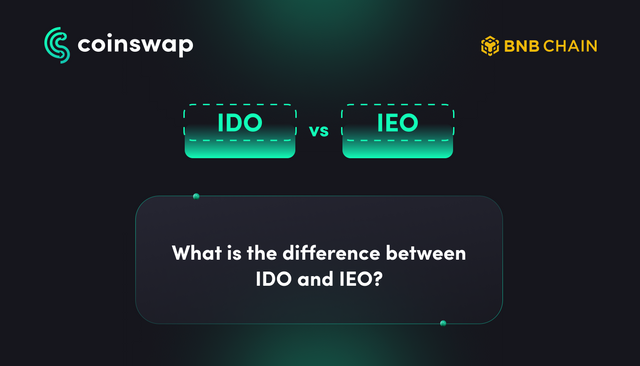
In the ever-evolving landscape of cryptocurrency, Initial Coin Offerings (ICOs) used to be the go-to method for fundraising by blockchain projects. However, due to regulatory concerns and the need for more secure and transparent fundraising mechanisms, two alternative methods have gained prominence: Initial DEX Offerings (IDOs) and Initial Exchange Offerings (IEOs). 🚀
IDO: The Rise of Decentralized Offerings
Initial DEX Offerings (IDOs) have emerged as a decentralized and community-driven fundraising model. Unlike traditional ICOs, IDOs take place on decentralized exchanges (DEXs) rather than centralized platforms. This shift offers several benefits. For instance, IDOs provide greater accessibility for a wider range of investors, as they bypass the often rigorous screening processes of centralized exchanges. This inclusive nature contributes to a more democratized investment landscape within the blockchain space. 💹
One of the defining features of IDOs is their decentralized nature. This means that projects can directly engage with their communities and supporters. Consequently, projects can achieve higher levels of decentralization and user participation, aligning with the core principles of blockchain technology. However, IDOs are not without challenges. The decentralized nature might lead to concerns related to the security and credibility of the projects, necessitating careful due diligence by investors.
IEO: The Exchange-Backed Offering
On the other hand, Initial Exchange Offerings (IEOs) are offerings conducted on cryptocurrency exchanges. Unlike ICOs and IDOs, IEOs provide an additional layer of security and credibility, as exchanges usually vet the projects before listing. This added scrutiny mitigates the risks associated with fraudulent projects that plagued the ICO era. IEOs also streamline the investment process, as investors can participate directly through their exchange accounts.
IEOs offer various advantages, including better exposure and marketing to a broader audience due to the exchange's established user base. This can lead to a more streamlined and efficient fundraising process for blockchain projects. However, the centralized nature of IEOs raises concerns about decentralization and control. Investors must also be cautious, as exchange endorsements do not necessarily guarantee the success of a project.
IDOs vs. IEOs: The Key Differences
The primary difference between IDOs and IEOs lies in their execution and underlying principles. IDOs prioritize decentralization, direct community engagement, and broader accessibility, while IEOs offer a higher level of security, credibility, and a streamlined investment process due to their association with established exchanges.
Ultimately, the choice between IDOs and IEOs depends on a project's goals, values, and target audience. Both methods have their strengths and drawbacks, representing the ongoing innovation within the cryptocurrency fundraising landscape. As the blockchain industry continues to mature, new fundraising models will likely emerge, providing even more options for blockchain projects and investors alike. 💡🌐